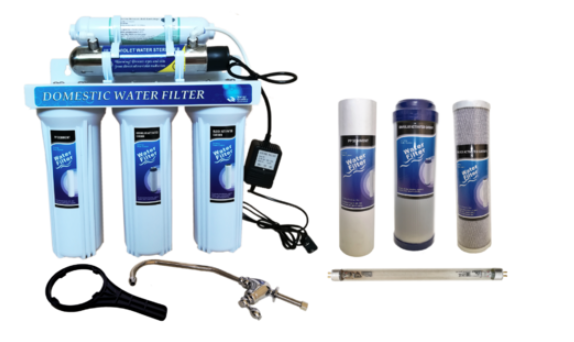Factors To Consider When Choosing Between Gas and Electric Industrial Powder Coating Ovens
Investing in an industrial powder coating oven requires careful thought, especially when deciding between gas and electric options. Both have their strengths, but the right choice depends on production needs, operational costs, and environmental factors. Understanding how each type functions under real-world conditions can make a big difference in efficiency and long-term performance.
Heating Response Time and How It Affects Production Speeds
The time it takes for an oven to reach the desired curing temperature directly affects production flow. Gas-powered ovens generally heat up faster because they use direct combustion, allowing them to achieve high temperatures quickly. This is particularly useful in high-volume operations where minimizing downtime is critical. The faster an oven can reach curing temperatures, the quicker it can move on to the next batch, keeping production lines running smoothly.
Electric ovens, on the other hand, take longer to reach peak temperatures. Since they rely on electrical resistance to generate heat, their response time is slower compared to gas units. While they offer precise temperature control, the longer warm-up time may not be ideal for businesses needing rapid cycle times. For operations requiring high throughput, the heating response time of a gas industrial powder coating oven can be a significant advantage.
Energy Consumption Differences That Impact Long-Term Operating Costs
Energy costs are a major factor in any industrial setting, and the type of oven used can have a big impact on the bottom line. Gas ovens typically have lower operating costs because natural gas and propane are often more affordable than electricity, especially for large-scale curing applications. Over time, this difference in fuel pricing can lead to significant cost savings, making gas ovens a more economical choice for businesses focused on long-term efficiency.
Electric ovens, while generally more energy-efficient per unit of heat produced, often lead to higher utility bills due to the price of electricity. In regions where power costs are high, this can add up quickly. However, they may still be a viable option for businesses that prioritize energy efficiency over fuel costs. When evaluating an industrial powder coating oven, it’s essential to compare local utility rates and energy efficiency to determine which option provides the best long-term value.
Installation Requirements and Space Considerations for Each Fuel Type
The physical setup of an oven plays a key role in determining which type works best for a facility. Gas ovens require ventilation systems to safely expel combustion byproducts, which means additional space and infrastructure must be considered. Proper gas line connections and exhaust ducting are necessary to meet safety regulations, adding to the complexity of installation. These factors may require more upfront planning and costs but result in a system that integrates well with large-scale production environments.
Electric ovens, in contrast, are often easier to install because they do not require venting for combustion gases. This makes them a good fit for facilities with limited space or those looking to avoid the added expense of ventilation systems. However, they may require significant electrical upgrades, especially for high-capacity models. Facilities considering an electric industrial powder coating oven should assess their existing electrical infrastructure before making a decision.
Maintenance Demands That Keep Gas and Electric Systems Running Smoothly
Regular maintenance is necessary to ensure any oven operates efficiently, but gas and electric models have different servicing needs. Gas ovens require periodic inspections of burners, gas lines, and exhaust systems to prevent safety hazards. Soot buildup, combustion inefficiencies, and potential gas leaks all need to be monitored closely. A well-maintained gas oven will perform reliably for years, but it does require routine oversight by trained technicians.
Electric ovens, while generally requiring less maintenance, still need attention to heating elements, wiring, and electrical connections. Over time, components can degrade, leading to inefficient performance or costly repairs. The absence of combustion means fewer moving parts, but electrical failures can be harder to diagnose and fix. Whether choosing a gas or electric industrial powder coating oven, staying on top of maintenance schedules is essential to avoid unexpected downtime.
Equipment Longevity and Performance Under Heavy Production Loads
An industrial powder coating oven must withstand demanding production cycles, making durability a key concern. Gas ovens are known for their longevity, especially in high-use environments. Their ability to maintain consistent high temperatures without excessive strain on components makes them a reliable choice for businesses with heavy production needs. The robust nature of gas heating systems allows them to operate efficiently over long periods without significant wear.
Electric ovens can also offer long lifespans, but they are more susceptible to wear on heating elements. In continuous-use applications, the constant cycling of power can lead to gradual degradation, requiring periodic replacements. While electric ovens work well for lighter-duty operations, gas ovens are often the preferred choice for businesses needing equipment that can handle long hours of operation without frequent servicing.
Environmental Impact and Emission Regulations for Gas vs. Electric Systems
Environmental considerations are becoming increasingly important, especially in industrial operations. Gas ovens produce emissions from combustion, which means facilities must comply with air quality regulations. Proper ventilation and exhaust filtration can help reduce environmental impact, but businesses must ensure they meet all required standards. Depending on the location, emissions restrictions may affect the feasibility of installing a gas-powered system.
Electric ovens, on the other hand, produce no direct emissions, making them a cleaner alternative. However, their environmental impact depends on the energy source used for electricity. If a facility operates in a region that relies on fossil fuel-based power generation, the overall carbon footprint may not be significantly lower than that of a gas oven. For businesses aiming to minimize environmental impact, considering the energy mix of their electricity supplier is just as important as the type of oven they choose.










